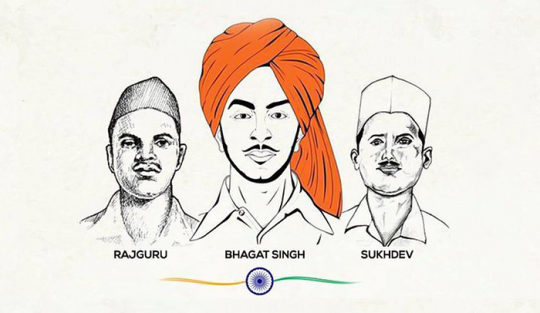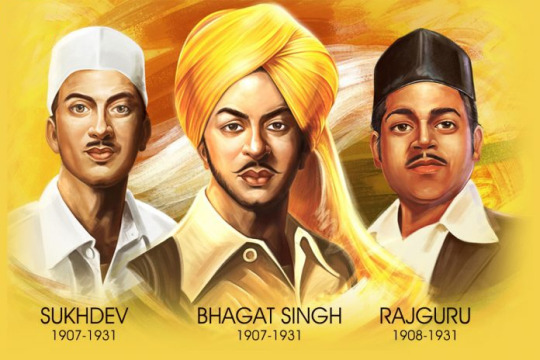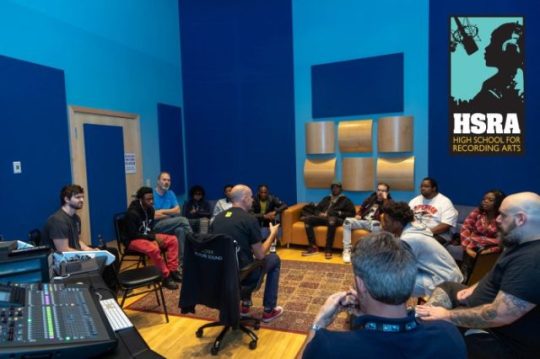#hsra
Text









Hospital São Rafael Arcanjo
HSRA | Principal Hospital no Centro de Colombo, região metropolitana de Curitiba: https://linktr.ee/hospitalsra
1 note
·
View note
Text




🎥 honkai: star rail | rondo across countless kalpas
"waiting for someone?"
#honkai: star rail#animated short#black swan#acheron#gifs#my gifs#//#hsr#honkai star rail#acheswan#honkaiedit#hsredit#hsr black swan#hsr acheron#black swan hsr#acheron hsr#kilruas#*black swan#*acheron#*hsras#gif warning
873 notes
·
View notes
Text

SP x HSRA
Craig x Tweek and Tail Sama x Huohuo
#south park#south park creek#sp creek#south park craig#south park tweek#craig tucker#tweek tweak#sp craig#sp tweek#craig x tweek
20 notes
·
View notes
Text
Break the contact to the opposite gender& remove them from social media or in real life.
Unfollow them. Never talk to the opposite gender for fun or for entertainment. Even if you are "just friends". A man and a woman can't be friends. Even if it's just texting. Even if it's about islam. As long as you don't want to marry, leave them alone. You don't know if their heart is getting attached to you. Wallahi it's not worth the sins and risking Jannah.
And even if you want to marry them, do it in a halal way! If something starts haram, the end will never please you. You will never have the blessings of Allah while doing something haram.
Allah says,,and do not come close to zina" (A-Hsra 17:32)
There is so much beauty in leaving them for the sake of Allah.
#islam#quoteoftheday#aesthetic#alhamdulillah#islam quote#beautiful quote#inspiration#life quotes#allahﷻ#prophet mohammad#reminded
2 notes
·
View notes
Text

Send from Sansgreet Android App. Sanskrit greetings app from team @livesanskrit .
It's the first Android app for sending @sanskrit greetings. Download app from https://livesanskrit.com/sansgreet
Chandra Shekhar Azad
Chandra Shekhar Azad (23 July 1906 – 27 February 1931), popularly known as by his self-taken name Azad ("Free"), was an Indian revolutionary who reorganised the Hindustan Republican Association (HRA) under its new name of Hindustan Socialist Republican Army (HSRA) after the death of its founder, Ram Prasad Bismil, and three other prominent party leaders, Roshan Singh, Rajendra Nath Lahiri and Ashfaqulla Khan. He often used the pseudonym "Balraj" when signing pamphlets issued as the commander in chief of the HSRA (Hindustan Socialist Republic Army).
#sansgreet #sanskritgreetings #greetingsinsanskrit #sanskritquotes #sanskritthoughts #emergingsanskrit #sanskrittrends #trendsinsanskrit #livesanskrit #sanskritlanguage #sanskritlove #sanskritdailyquotes #sanskritdailythoughts #sanskrit #resanskrit #chandrasekharazad #chandrashekharazad #chandrashekhar #azad #celebratingsanskrit #hsra #freedomfighter #madhyapradesh #allahabad #prayagraj #uttarpradesh #revelutionary #leader #politicalactivist #incredibleindia
#greetingsinsanskrit#sanskritgreetings#sanskrittrends#trendsinsanskrit#livesanskrit#sanskrit#celebratingsanskrit#incredibleindia#indianarmy
0 notes
Text
Freedom Fighters of India: Heroes Who Shaped the Nation's Independence
Introduction
India's struggle for independence is a saga of courage, sacrifice, and unyielding determination. The nation’s freedom fighters played a crucial role in overthrowing British colonial rule, and their legacy continues to inspire generations. These brave individuals came from various backgrounds, but they shared a common goal: to see India free from foreign domination. This article delves into the lives and contributions of some of the most notable freedom fighters of India.
Mahatma Gandhi: The Father of the Nation
Mahatma Gandhi, born Mohandas Karamchand Gandhi, is arguably the most recognized figure in India's fight for independence. His philosophy of non-violence (Ahimsa) and civil disobedience became the cornerstone of the Indian independence movement.
Early Life and Education
Gandhi was born on October 2, 1869, in Porbandar, Gujarat. He studied law in London and later moved to South Africa, where he developed his political views and leadership skills.
Non-Cooperation and Civil Disobedience
Gandhi returned to India in 1915 and soon became a prominent leader in the Indian National Congress. His non-cooperation movement in 1920 and the civil disobedience movement in 1930, which included the famous Salt March, were pivotal in galvanizing Indian masses against British rule.
Legacy
Gandhi’s commitment to non-violence and his role in the freedom struggle earned him the title "Father of the Nation." His teachings continue to influence global movements for civil rights and freedom.
Jawaharlal Nehru: The First Prime Minister
Jawaharlal Nehru was a central figure in Indian politics both before and after independence. He was a close associate of Gandhi and played a key role in shaping modern India.
Early Life and Political Awakening
Born on November 14, 1889, in Allahabad, Nehru was educated at Harrow and Cambridge. His exposure to Western political ideas deeply influenced his thinking.
Role in the Freedom Struggle
Nehru was a prominent leader in the Indian National Congress and participated in several key movements, including the Quit India Movement of 1942. He was imprisoned multiple times for his activities against British rule.
Prime Minister of Independent India
On August 15, 1947, India gained independence, and Nehru became the first Prime Minister. His vision of a secular, socialist India laid the foundation for the country's political and economic policies.
Subhas Chandra Bose: The Revolutionary Leader
Subhas Chandra Bose, known for his militant approach, was a formidable force in the Indian independence movement. His slogan "Give me blood, and I will give you freedom" reflects his fierce patriotism.
Early Life and Radical Ideology
Bose was born on January 23, 1897, in Cuttack, Odisha. He was educated in England and passed the Indian Civil Services exam but chose to join the freedom struggle instead.
Formation of the Indian National Army
Disillusioned with the Congress's non-violent methods, Bose formed the Indian National Army (INA) with the support of Axis powers during World War II. His aim was to liberate India through armed struggle.
Impact and Legacy
Although the INA did not achieve its goal, Bose's efforts significantly boosted the morale of Indian nationalists. He remains a symbol of defiant patriotism.
Bhagat Singh: The Martyr
Bhagat Singh is revered as a martyr and one of India's greatest revolutionaries. His daring acts of defiance and ultimate sacrifice made him a legend in the freedom movement.
Early Life and Radicalization
Born on September 28, 1907, in Punjab, Bhagat Singh was inspired by the Jallianwala Bagh massacre and the Ghadar movement. He joined the Hindustan Socialist Republican Association (HSRA) and advocated for a socialist India.
Iconic Acts of Rebellion
Singh’s most famous acts include the assassination of British police officer John Saunders in 1928 and the bombing of the Central Legislative Assembly in 1929. He was arrested and sentenced to death.
Execution and Legacy
Bhagat Singh was hanged on March 23, 1931, at the age of 23. His fearless actions and writings continue to inspire youth and activists across India.
Rani Lakshmibai: The Warrior Queen
Rani Lakshmibai of Jhansi is one of the most celebrated female freedom fighters. Her bravery during the 1857 revolt against the British is legendary.
Early Life and Marriage
Born in 1828 in Varanasi, she married the Maharaja of Jhansi. After her husband’s death, she assumed control of the kingdom.
Role in the 1857 Revolt
Lakshmibai led her troops against the British forces with remarkable valor. Her defense of Jhansi became a symbol of resistance and courage.
Legacy
Lakshmibai died in battle in 1858, but her legacy as a fearless leader and patriot endures. She remains an icon of strength and resistance.
Bal Gangadhar Tilak: The Assertive Nationalist
Bal Gangadhar Tilak, known as "Lokmanya," was a fiery nationalist and one of the first leaders to demand complete independence for India.
Early Life and Education
Tilak was born on July 23, 1856, in Ratnagiri, Maharashtra. He was a scholar and teacher who founded educational institutions to foster nationalist sentiments.
Political Activism
Tilak’s slogan "Swaraj is my birthright, and I shall have it" resonated with millions of Indians. He launched the Home Rule Movement and was imprisoned for sedition.
Influence and Legacy
Tilak’s assertive stance and advocacy for self-rule laid the groundwork for future freedom fighters. His contributions to Indian nationalism are immeasurable.
Sardar Vallabhbhai Patel: The Iron Man of India
Sardar Vallabhbhai Patel played a crucial role in India's independence and the integration of princely states into the Indian Union.
Early Life and Legal Career
Patel was born on October 31, 1875, in Gujarat. He was a successful lawyer before joining the freedom struggle.
Role in the Freedom Movement
Patel was a key leader in the Indian National Congress and worked closely with Gandhi. He led the Bardoli Satyagraha and played a significant role in the Quit India Movement.
Architect of Indian Unity
After independence, Patel became the Deputy Prime Minister and Minister of Home Affairs. He was instrumental in unifying over 500 princely states into the Indian Union.
Conclusion
The freedom fighters of India exhibited unparalleled bravery and dedication. Their sacrifices and relentless efforts paved the way for India's independence. These heroes, through their diverse strategies and unyielding spirit, have left an indelible mark on the nation's history. Their legacy is a testament to the power of unity and the relentless pursuit of freedom.
0 notes
Text
March 23, 1931: The Martyrdom of Bhagat Singh, Sukhdev Thapar, and Shivaram Rajguru
Sure, here’s a fuller account of the events surrounding March 23, 1931:
March 23, 1931: The Martyrdom of Bhagat Singh, Sukhdev Thapar, and Shivaram Rajguru
March 23, 1931, marks a significant moment in the history of India’s struggle for independence from British rule. On this day, three revolutionary freedom fighters, Bhagat Singh, Sukhdev Thapar, and Shivaram Rajguru, were executed by hanging in Lahore Central Jail.
Bhagat Singh, born on September 28, 1907, in a small village in Punjab, was deeply influenced by the political turmoil of his time. He became actively involved in the struggle for independence from a young age, joining the Hindustan Socialist Republican Association (HSRA), a revolutionary organization dedicated to overthrowing British rule through armed resistance.
On December 17, 1928, Bhagat Singh and his associates orchestrated the assassination of British police officer John Saunders in retaliation for the death of Lala Lajpat Rai, a prominent freedom fighter who had died from injuries sustained during a protest against the Simon Commission. However, it was mistakenly Saunders who was targeted instead of the actual assailant.
In a daring act of defiance, Bhagat Singh and his comrades threw pamphlets and shouted slogans after the killing, declaring their intent to seek retribution for the injustices inflicted upon their countrymen by the British authorities. Following the incident, Bhagat Singh and his associates went into hiding, becoming folk heroes and symbols of resistance against British oppression.
However, their underground activities came to an end on April 8, 1929, when Bhagat Singh and Batukeshwar Dutt threw bombs in the Central Legislative Assembly in Delhi to protest against the repressive laws enacted by the British government. Though their intention was not to cause harm but to attract attention to their cause, the act resulted in their arrest.
During their imprisonment, Bhagat Singh, Sukhdev Thapar, and Shivaram Rajguru continued to advocate for India’s independence, engaging in hunger strikes and writing powerful letters and essays that captured the imagination of the Indian masses.
Despite widespread protests and calls for clemency, the British authorities remained steadfast in their decision to execute the three revolutionaries. On March 23, 1931, Bhagat Singh, Sukhdev Thapar, and Shivaram Rajguru were led to the gallows in Lahore Central Jail, where they met their martyrdom with courage and dignity.
The sacrifice of Bhagat Singh, Sukhdev Thapar, and Shivaram Rajguru galvanized the Indian independence movement, inspiring countless others to join the struggle for freedom. Their legacy lives on in the hearts and minds of millions of Indians, serving as a reminder of the indomitable spirit of those who dare to dream of a better tomorrow.

#shaheeddiwas#bhagatsinghji#bhagatsinghlegend#rajguru#sukhdev#boardingschool#ambala#hostellife#education#schoollife#education2024#admissionopennow#cbse#springfieldpublicschool#cbseschool#sps#sainik school cocahing#sainik school results
1 note
·
View note
Text
Shaheed Diwas: Remembering the Martyrs of India’s Freedom Struggle

Show your respect to India’s freedom fighters on this special day with AdBanao App. Read the special blog about Shaheed Bhagat Singh, Sukhdev, and Rajguru Ji.
Shaheed Diwas: Remembering the Martyrs of India’s Freedom Struggle
On 23rd March every year, India observes Shaheed Diwas, or Martyrs’ Day to pay homage to the three young revolutionaries who sacrificed their lives for the cause of India’s independence.
Bhagat Singh, Sukhdev Thapar, and Shivaram Rajguru were hanged to death by the British government on this day in 1931, after being convicted for the assassination of a British police officer in Lahore.
Their courage, patriotism, and sacrifice inspired millions of Indians to join the freedom movement and fight against the oppressive colonial rule.
Brief Story of Bhagat Singh, Sukhdev, and Rajguru.
Bhagat Singh was born on 28th September 1907 in a Sikh family in Punjab. He was influenced by his family’s involvement in the Gadar movement and the revolutionary activities of Kartar Singh Sarabha and Rash Behari Bose.
He joined the Naujawan Bharat Sabha, a youth organization founded by Lala Lajpat Rai, and later became a member of the Hindustan Socialist Republican Association (HSRA), a radical group that aimed to overthrow British rule through armed struggle.
Sukhdev Thapar was born on 15th May 1907 in Ludhiana, Punjab. He was also a student of the National College in Lahore, where he met Bhagat Singh and Yashpal.
He was an active member of the Naujawan Bharat Sabha and the HSRA and was involved in various revolutionary activities such as distributing pamphlets, organizing meetings, and collecting funds.
Shivaram Rajguru was born on 24th August 1908 in Khed, Maharashtra. He was a devout Hindu and a follower of the Arya Samaj.

The trio became famous for their daring attack on the British police officer John Saunders on 17th December 1928, in retaliation for the death of Lala Lajpat Rai, who was injured in a lathi charge ordered by another officer, James Scott. Bhagat Singh and Rajguru shot Saunders dead, while Sukhdev and Chandra Shekhar Azad provided cover. They then escaped from the scene and went into hiding.
On 8th April 1929, Bhagat Singh and another HSRA member, Batukeshwar Dutt, threw two bombs and leaflets inside the Central Legislative Assembly in Delhi, to protest against the repressive laws enacted by the British. They did not intend to harm anyone, but to make the deaf hear. They surrendered after the bombing and were arrested along with other HSRA members.
The trial of the Lahore Conspiracy Case, as it came to be known, lasted for two years. During this period, Bhagat Singh, Sukhdev, and Rajguru, along with other prisoners, went on a hunger strike to demand better treatment and equal rights for Indian political prisoners. They also used the court as a platform to propagate their revolutionary ideology and expose the injustice of British rule.

Download special Shaheed Diwas Posters, videos, trending reels, free statuses, audio jingles, WhatsApp stickers, and much more.
Read the full blog here.
#india#indianfreedom#bhagat singh#sukhdev#adbanao#digitalmarketing#adbanaoapp#postermaker#social media advertising#gandhi#freedom#indian#poster
0 notes
Link
0 notes
Text
Key Players in the Railway Construction Market: A Complete Guide
The railway construction market involves various key players, including construction companies, equipment manufacturers, engineering firms, and government agencies.

For more regional insights into the railway construction projects market, download a free report sample
Here is a complete guide to some of the prominent entities in the global railway construction industry:
1. Major Construction Companies:
China Railway Construction Corporation (CRCC): CRCC is one of the largest railway construction companies globally, known for its involvement in high-speed rail projects and urban transit systems.
VINCI Group: VINCI is a French multinational company with extensive experience in railway infrastructure construction, including high-speed rail lines, metro systems, and tramways.
Bouygues Construction: Bouygues is a global construction firm that has worked on various railway projects, including the construction and maintenance of railway lines and stations.
Skanska: Skanska is a Swedish construction company involved in railway projects such as tunnels, bridges, and railway station construction.
Bechtel: Bechtel is a U.S.-based engineering and construction company with a presence in railway infrastructure projects worldwide.
2. Rolling Stock Manufacturers:
Siemens Mobility: Siemens is a leading manufacturer of rolling stock, including high-speed trains, locomotives, and passenger cars.
Alstom: Alstom, a French multinational, is known for its expertise in manufacturing trains, tramways, and signaling systems.
CRRC Corporation Limited: CRRC, based in China, is the world's largest rolling stock manufacturer, producing a wide range of railway vehicles, including high-speed trains and metro cars.
Bombardier Transportation: Bombardier manufactures passenger and commuter trains, light rail vehicles, and signaling systems for rail networks worldwide.
3. Engineering and Consulting Firms:
Jacobs Engineering Group: Jacobs provides engineering and consulting services for railway projects, including design, planning, and project management.
AECOM: AECOM offers a range of services in railway engineering, including infrastructure design, environmental assessments, and project delivery.
WSP Global: WSP provides consulting and engineering services related to rail transportation, including railway planning and design.
4. Government and Regulatory Authorities:
Federal Railroad Administration (FRA, United States): The FRA oversees railway safety, regulations, and policy development in the United States.
European Railway Agency (ERA): ERA is responsible for promoting railway safety and interoperability within the European Union.
Indian Railways: The Indian Railways is one of the world's largest railway networks, owned and operated by the Indian government.
5. Infrastructure Developers:
High-Speed Rail Authority (HSRA, Various Countries): Organizations like HSRA are responsible for planning and implementing high-speed rail projects in different countries.
TransLink (Canada): TransLink is responsible for public transportation planning and development, including rail systems, in the Greater Vancouver area.
6. Material Suppliers and Technology Providers:
Voestalpine: Voestalpine supplies railway infrastructure materials, including rails and turnout systems.
Thales Group: Thales specializes in railway signaling, communications, and transportation systems.
SiTrack: SiTrack is a provider of track maintenance and monitoring solutions for railways.
7. Public-Private Partnerships (PPPs):
Various Private Sector Partners: Many railway construction projects involve public-private partnerships where private sector companies collaborate with government agencies to finance, construct, and operate rail infrastructure.
In the railway construction market, collaboration among these key players is essential to successfully plan, develop, and maintain railway networks that meet the growing demand for efficient and sustainable transportation worldwide.
0 notes
Text

Colombo 133 Anos! 💙💙💙 Parabéns grande cidade da tradição de sempre inovar e conquistar cada vez mais espaço nos cenários estadual e nacional. A oitava maior cidade do Paraná segue no caminho do progresso preservando suas raizes e sua cultura. O Hospital São Rafael Arcanjo orgulha-se em fazer parte dessa história.
1 note
·
View note
Text









🎥 honkai: star rail | rondo across countless kalpas
"then... how about a dance?"
#honkai: star rail#animated short#black swan#acheron#gifs#my gifs#//#hsr#honkai star rail#acheswan#honkaiedit#hsredit#hsr black swan#hsr acheron#black swan hsr#acheron hsr#kilruas#*black swan#*acheron#*hsras#gif warning#tw horror#tw body horror
937 notes
·
View notes
Text
Minnesota's HSRA Leads the Way: Saving the Lives of Youth Via Hip-Hop

The state of Minnesota is leading the way in demonstrating hip-hop's power to shape culture and save lives. Here's what they are doing.
HSRA (Highschool of the Recording Arts: Invests in the Future
Whitney Houston once crooned, " believed that children were our future, teach them well and let them lead the way. Show them the beauty they possess inside." And in Minnesota, David T.C. Ellis is doing just that. His creation, HSRA, affectionately known as Hip-hop High, stands as a testament to his commitment and the positive outcomes it has yielded. Over the years, Hip-hop High has indeed functioned as a beacon of hope for countless young individuals in Minnesota, making a significant impact on their lives and even, in some cases, saving them.
The Difference Maker
HSRA. Image Source: HSRA
How does one use education and music to save lives? They do so by developing a curriculum that reaches the student where they are at. And this is what Hip-hop High has mastered.
Hip Hop High School isn't your typical educational institution. It's a public school with a distinctive mission of transforming its students' lives through a uniquely crafted curriculum. According to The 74,
"HSRA teaches core subjects through a musical lens, enabling students to develop skills and agency to deal with real-world issues."
The program's effectiveness is undeniably clear, and the testimonials of students like Cameron Keys underscore this. In fact, Keys enthusiastically attributes his life's transformation to the institution, going as far as to say it saved him. As The 74 records, according to Keys,
"HSRA help put him on a pathway to where he is in life now — living in Tennessee with his wife and working a stable job as a Walmart manager."
Ultimately, it's not astonishing to witness such remarkable outcomes. When a project is fueled by genuine passion and unwavering love, the results it produces are unquestionably powerful and impactful.
Ellis's Dream: HSRA
Interestingly, Ellis didn't initially set out to establish HSRA; rather, it emerged from his heartfelt desire to contribute positively to his community. According to HSRA, in 1996, Ellis endeavored to start a pilot program. It is noted,
"Ellis started Studio 4 as a recording production studio."
Amazingly, the youth came in droves. Recognizing the thirst in the community and seeing a young populace in need spurred him to stretch. Those seedlings of inspiration eventually led to the development of an "educational pilot program." So, in 1998, what began as a spark was fully manifested. And the HSRA continues to grow and be a haven in St. Paul, Minnesota.
https://youtu.be/dbhTig4OpZU
Why This is Important
Such a gesture stands out in the context of Hip-hop's 50th anniversary. In Ellis' work, he activates the fifth fundamental pillar of hip-hop, knowledge, one on which all others rest. He illustrates what hip-hop really means as a force of change and progress.
As Midination highlights, Bambaataa's vision of hip-hop envisioned it as a catalyst for social change, a vision that emphasizes the importance of imparting knowledge, guiding individuals toward understanding, and facilitating practical implementation. This aligns perfectly with the mission and purpose of HSRA, which is dedicated to precisely these principles.
So, at FM Hip Hop, we tip our hats to David TC Ellis for not only talking about change, but being the change.
Written by: Renae Richardson
Read the full article
0 notes
Text
Minnesota’s HSRA Leads the Way: Saving the Lives of Youth Via Hip-Hop
Minnesota’s HSRA Leads the Way: Saving the Lives of Youth Via Hip-Hop
0 notes
Text
Nationalization Vs Privatization
Nationalization Vs Privatization
At first look, it seems both are antagonistic; where the first one is for the people, for the “country”, while the second one is for the capitalist class. Hence, Congress, during the Nehru era was pursuing socialism, and after neo-liberal policy, undertaken by Rahul Gandhi government, known as Manmohan Singh’s economic policy (He was the then Finance Minister), was pursuing capitalism. Neo-liberalism came with various masks, like globalization, perestroika, reform, cure of bureaucracy and ailments killing the public sectors, worker’s apathy towards the work, loss of profit and unnecessary expenditure on welfare and subsidies on the working people and retired personnel. Aim was to augment falling profit rate of the capitalist class and maintain the latter’s hegemony. Result, of course, was acceleration in concentration and accumulation of wealth in few hands, albeit in name of reviving the capitalist economy, which is in deep irreconcilable contradiction.
Let us analyze the past, immediately after Indian independence, in fact even before that. The “smooth” handing over of power to Indians (and Pakistanis) was not to or for the working class, as envisaged by the HSRA, founded by Chandrasekhar Azad, Bhagat Singh, Ashfaqualla and others, and Communist Party of India. In fact, when the Indian Constitution was being made, there were four participating groups, one of them was represented by the Communist Party of India and who were forced to quit, when it was clear that the Constitution was to be in the service of the private property and was to safeguard the capitalist class (even the remaining feudal class) interest. This was a tacit understanding between the British Raj and the bourgeois class and Congress Party, Muslim league, USA, and those others, who mattered, except the people of India.
Two examples must be studied to understand the characteristics of the Indian bourgeois class; first, how it dealt with the Telangana movement, which was against the British Raj as well as its accomplice Nizam and Feudal Lords and the Rajakars (Nizam’s Army), under the leadership of CPI, which fought very valiantly since 1945 to 1952 or 53, till the leadership abandoned its own cadre to favor Nehru/Patel’s government and signed the pact of peace treacherously, one sided, favoring the Indian State. The UNO had raised the Human Right’s question, where more than 2000 local women were raped, tortured and 1000s of fighters and their sympathizers were killed in fake encounters as well as in jails by the Army of GOI and Nizam (Government of Nehru and Patel), but somehow was quashed. After the peace pact followed and the Telangana Movement finished, the Nizam and his Army men were rehabilitated, in the most possible “honorable” fashion.
Similar was the Bombay Mutiny in 1946, which spread to Lahore, Bengal, Madras and was supported by the workers, peasants, youths, various Unions and organizations across the country. However, Congress and Muslim League officially and openly opposed the mutiny, advised their respective followers to remain away from the “law and order” problems, as they never wanted to share the power with the working class. CPI seems to have chickened out or failed to analyze the situation and opportunity correctly. The statements of JL Nehru, Jinnah, Sardar Bhai Patel were in support of the British and opposed to the soldiers and the people’s revolt against the British. The power would have gone to the revolutionary working class, if the revolt would have succeeded, and naturally, was not supported by the existing political parties and organizations, like RSS, VHP.
However, after the independence was secured, despite all the bloodbath between the two new emerged nations, India and Pakistan, India preferred to follow industrialization and modernization of all the industries, services, and superstructure and new industries, factories. The Indian bourgeois class was unable to take over these concerns, enterprises, due lack of capital as well as technical knowhow and other much needed wherewithal. “Bombay plan” may be referred to, which shows how the bourgeoisie was in favor of growth of public sectors, with the active intervention of the government, where it itself was unable to move forward due lack of wherewithal, like technology and capital, mostly in big industries and supporting services, like railways, airlines, shipping, power, steel, defense sector, insurance companies, Research & Development Concerns, etc.
Hence, the GOI had to intervene and build all the “Navratans”, superstructures and other parts of public concerns; Airlines and Airports, Shipping (Jahajrani, SCI), Power, ONGC, BSNL, Research works (DRDO, etc.), super specialty medical services, ISRO, ASI, Highways, Railways, and many others. 5 Year plan may sound like having borrowed from the USSR, but it was supported by Tata, and other big capitalists. USSR was happy in providing cheap technical knowhow as well as big machineries, like Thermal Plant in Patratu (Jharkhand), Defense equipment, with the help to build and repair facilities (BRD), etc., which was also in sync with its foreign policy, to keep the MNCs away, as much as possible, in the new rising nations.
Was socialism being constructed in India? No, as the state power was in the hands of the bourgeois class and the working class, though much united than today and militant, was in back seat, “satisfied” with the “facilities and labor laws” in its favor, as its leadership wanted. The situation gave a brilliant ideological framework to the CPI to support the ruling party, Congress, in name of building socialism, which of course was strengthening industrial as well as finance capital. The bureaucracy (red tapeism), corruption and other ailments penetrated into the public concerns in a natural fashion and “Socialism” was blamed. In the meantime, capitalist restoration in USSR gave “moral” support to the opportunist Communist Parties, the world over, to shun class struggle and followed Parliamentary Struggle, a path to build Socialism peacefully. An open class collaboration followed and these parties happily accepted opportunism and revisionism, the leadership which opposed these political lines, had to break away from the old parties, but in most cases that lead to “revisionism vs revisionism”, like CPI(M) or Left Wing adventurism, like Maoists (the earlier version, Naxalite movement did connect question of state power to the struggle, more appropriately class struggle, but that was the end of its “break” from the past revisionism and we know, finally this movement was crushed by the Indian State.).
By the way, this above analysis is circulating among the communist circles since late 70s or early 80s (or even before that), but has remained in scholarly debates or in study circles and could not percolate down to in practice.
Well, the nationalization, end of Privy system, etc. were accelerated during Indira Gandhi regime, and the “Left” was euphoric, Garibi Hatao (Remove Poverty), inclusion of the word “Socialism” in the Constitution and other rhetoric were nothing but part of capitalist society and capitalist politics, the political economy, that was being followed, was nothing but steadily empowering capital and the concentration of wealth in hands of few was accelerating. The nationalization of 14 largest banks in India in 1969, when Indira Gandhi was PM (And even FM) did not work towards the upliftment of the poor. Compare with this:
“The ownership of the capital wielded by and concentrated in the banks is certified by printed and written certificates called shares, bonds, bills, receipts, etc. Not a single one of these certificates would be invalidated or altered if the banks were nationalized, i.e., if all the banks were amalgamated into a single state bank. Whoever owned fifteen rubles on a savings account would continue to be the owner of fifteen rubles after the nationalization of the banks; and whoever had fifteen million rubles would continue after the nationalization of the banks to have fifteen million rubles in the form of shares, bonds, bills, commercial certificates and so on.”
(Lenin in 1917 on Bank’s Nationalization)
The so called “Socialism” through nationalization never attacked the production field, where the means of production was in the hands of the capitalist class, and where the surplus value was created by the workers and usurped by the capitalist class. A small part of the surplus value (or rather through more exploitation of the workers) was used in circulation through welfare measures and subsidies. This allowed a small section of the working class to enjoy the bourgeoisie’s big “heartedness” towards its social duty, on the cost of the others. Today, the others, the workers in unorganized sectors are approximately 93%. Do we have to remind our readers about CSR (Corporate Social Responsibility, which is to remind the people that “Business is for good”).
To jump a few decades forward, we see the “opening” of the economy, reforms, globalization, changes in labor laws, introduction of laws for land acquisition, dilution of environment acts, etc. followed in 1980s, accelerated in 1990s, so far all by the “Socialist” Congress government, in between (RSS) BJP Government, under Vajpayee and now Modi government. Modi government has much freedom to work due rise of fascism, a social movement, where a section of the mass is supporting most of its anti-people economic and political policies, in hope of crushing the minorities and Dalits and building Hindu Rashtra and India becoming a World Leader (Vishwa Guru).
The building up of the Indian property in many compartments, but mainly in government and in private hands, was all for the capital and its various forms, and now, when the world economy in plunging into economic crisis, even before Coronavirus Pandemic, and is almost in Economic Depression (May be at lower scale than 1928-31 economic recession), the capitalist class, with no love for the working class and the oppressed people, has thrown the country under the yoke of fascism (like to call it accelerated neoliberalism, with state sponsored as well as directly by the state violence?), and is ruthlessly “re-appropriating” the created public funds and concerns! See the rate of privatization of almost all the public concerns, whether they are in loss/profit or are inefficient/efficient, is of no more a concern, all are to be privatized, as soon as possible!
There is bridge between the earlier “Socialist” construction, better say it resembled a welfare state (providing social security to the “white colored workers” or “Labor aristocratic”, trickling down to middle level but, in reality, far from it) and now the capitalist “restoration” in India, but with a violent break, qualitative changes, from a masked “democracy” and constitutional government to open fascistic regime, where constitutional methods have been thrown into the dustbin. The world imperialism, IMF, WB, etc. have full support to the Indian bourgeois class and their tirade against the proletarian class is openly visible, with a sizable pie in the plunder; like they support Israeli Zionism.
The nationalization in a capitalist society or country is for the capitalist class and not for the working class. The unemployment, poverty, inequality continues rising in both the bourgeois state, namely anti-people state or “pro people” (Welfare state) state, but during the crisis, either political, economic or any other kind, the bourgeois state comes down heavily on the working class legally, illegally, socially (A section of the mass supports it, for some perks or for some regressive and jingoistic ideology), through police, military, bureaucracy, etc. Remember, in all such cases, the unity of working class must be at the lowest level, planned or unplanned, and the Communist Parties would have failed to counter or resist the bourgeoisie attack, due its weakness, like revisionism or deviation from the revolutionary ideology and class struggle.
While we, the revolutionary forces, work with the proletarian class and its oppressed allies, we do join their struggle, protests, rallies; it is our task to educate them on political economy, telling them how such concessions, which they may bargain due balance of power in their favor, is temporary. These concessions are taken away, when the enemy class becomes the dominant bargainer, especially during the crisis and when the unity of the working class is weakened. Nationalization in any bourgeois society or state is not confiscation of the means of production from the capitalist class, but taking over the management from the private hands by the state, after giving away the full compensation to the earlier owners. Yes, that does facilitate few well paid and even other employees for a comparatively peaceful life and save the wrath of their erstwhile capitalist masters. The capital is preserved with all its characteristics. Here nationalization, as we can see, blunts the class struggle.
Also remember, without failing for a moment, that in capitalism or in monopoly capitalism, the state is not neutral but biased against the proletarian class and favors the capitalist class; rather it is safer to say that the state, in capitalism, is controlled by the capitalist class. Present Indian state is a burning example. The birth and growth of state is to facilitate the interest and safety of the ruling class against the ruled class.
The real emancipation of the exploited class is in its own state, by defeating the enemy class and smashing its old state apparatus, and by building a socialist society, where the private property is converted into social wealth. Nationalization of industries and land and other resources, in a country, where the state power is in the hands of the working class, through its revolutionary party, is a transitory method to control the production, as long as state exists (It is not state capitalism) and later make it part of social wealth. We call it socialization, and that is our aim. Here nationalization helps the proletariat party, in power, to build socialism.
The genius of Marx lies in his having been the first to deduce with the help of dialectical materialism, the lesson world history teaches and to apply that lesson consistently. The deduction he made is the doctrine of the class struggle.
1 note
·
View note